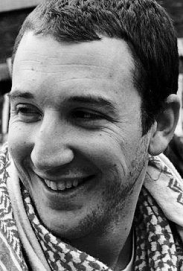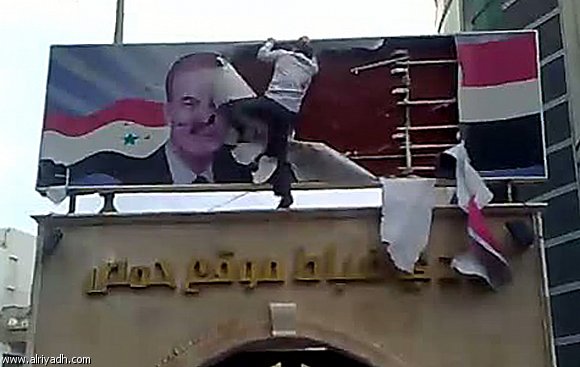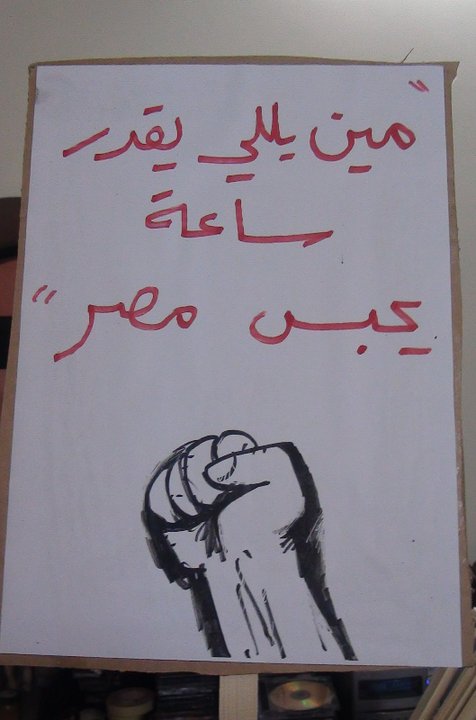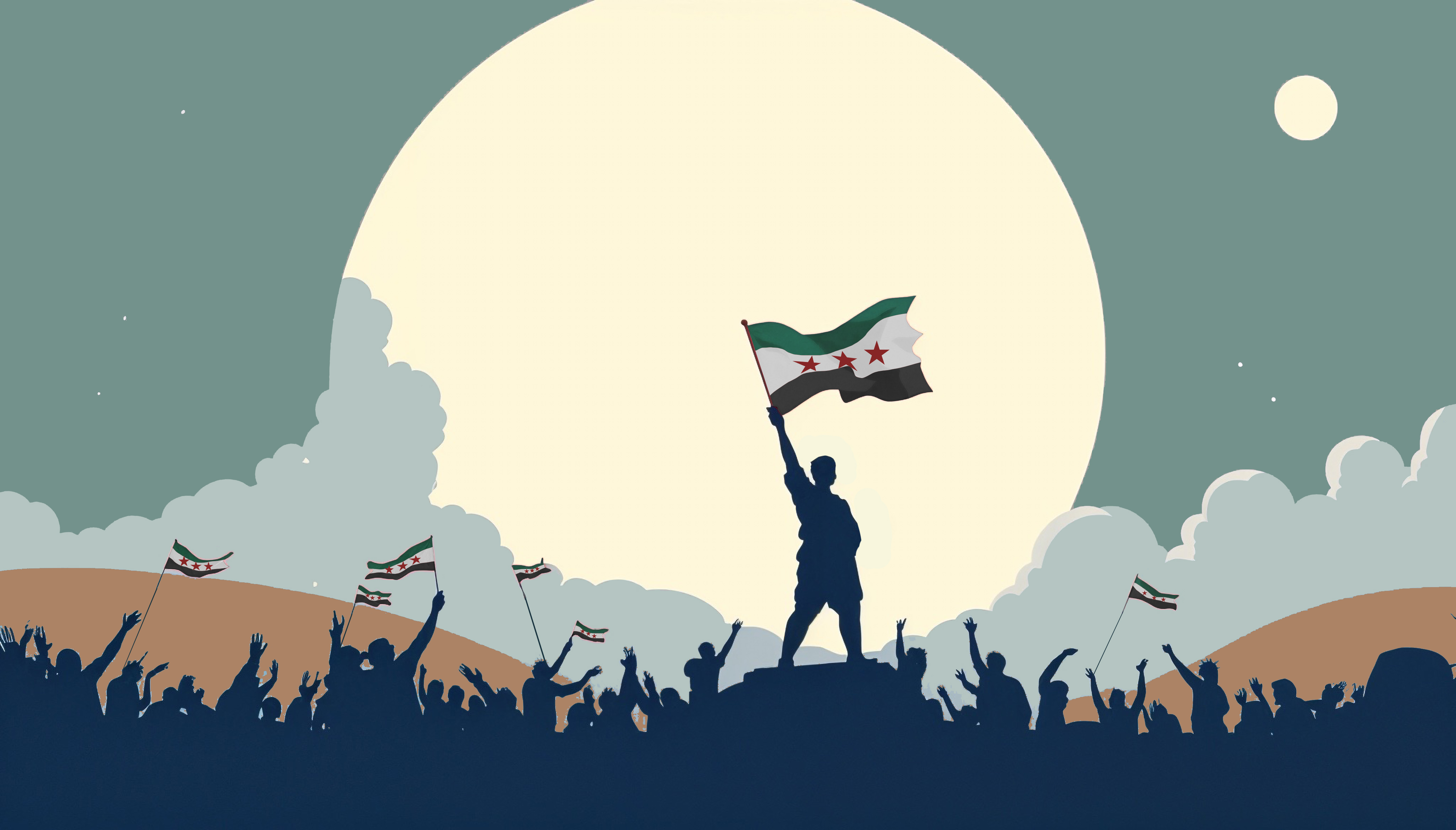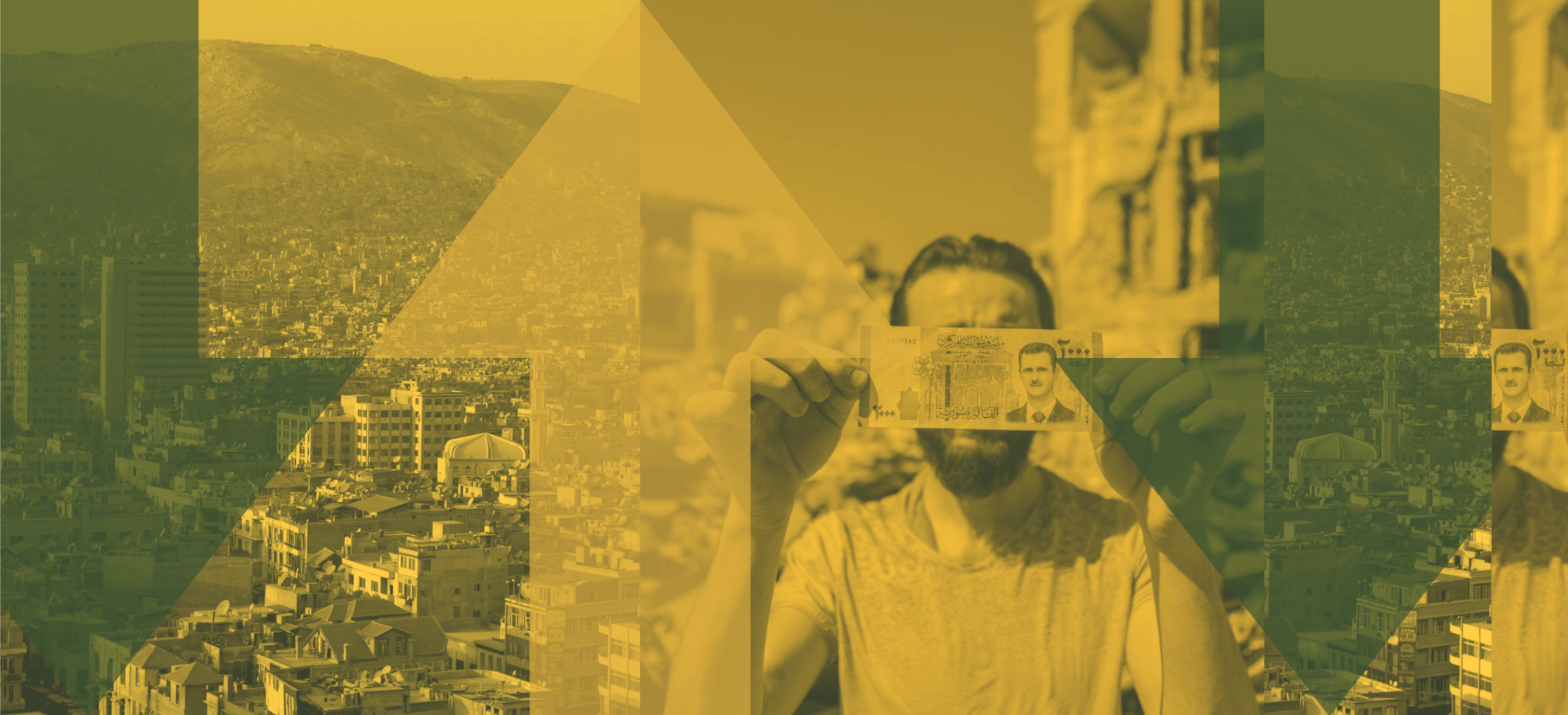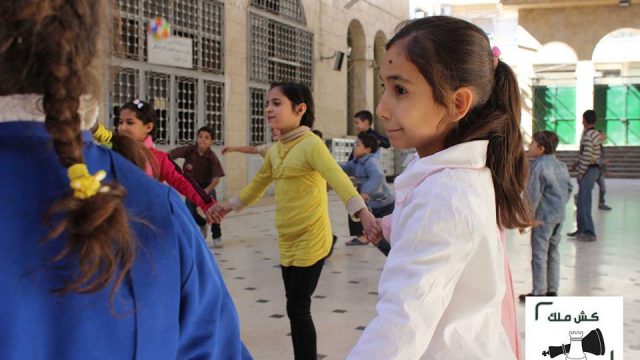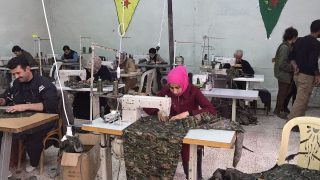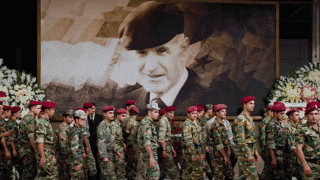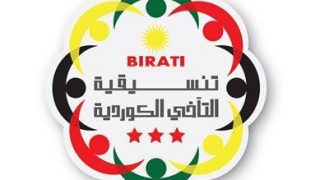The fall of the Bashar al-Assad regime is part of the continuity of the revolutionary processes that began in the Middle East and North Africa in 2011. The overthrow of the Assad family regime in power since 1970 is the accumulation of struggles waged since the popular uprising in March 2011. The military offensive led by armed opposition groups started in November 2024 marked its final blow a few weeks later in December.
Many questions are being raised around Syria’s future, and particularly on what are the main threats to the establishment of a democratic society. Some liberal and democratic commentators, intellectuals, activists have focused on the “feloul” or remnants of the ancient regime, particularly the security and military sectors, as the main threat today for the country. On social networks, mentions of an Egyptian scenario is often mentioned, regarding the Sisi led coup against the President Morsi, member of the Muslim Brotherhoods in July 2013.
On the other side, there are some sectors of commentators and democrats that are relatively uncritical or not significantly on the current HTS led administration. They generally give the Salafist group credentials for its management of the transitional phase.
This article seeks to study what are the main threats for Syria’s democratic future, which stands for social justice and equality for all in the country. It will analyse first the threat represented by the remnants of the ancient regime and then examine HTS policy of consolidating its power on the new Syria.
What was the nature of the Assad regime?
First, it is important to analyse what was the nature of the ancient regime. The Assad family had established a despotic and patrimonial regime in Syria. This despotic and patrimonial regime was an absolute autocratic and hereditary power, which functioned through ownership of the state by a small group of individuals connected by family, tribal, sectarian and clientelist connections symbolized by the Presidential Palace led by Bashar al-Assad and its family. The armed forces were dominated by a praetorian guard (a force whose allegiance goes to the rulers, not to the state) represented by the Fourth Brigade headed by Maher al-Assad, as is the case for economic means and the levers of administration. The Syrian regime developed a type of crony capitalism dominated by a small group of businessmen completely dependent on the Presidential Palace (Bashar al-Assad, Asma al-Assad and Maher Al-Assad), who exploited their dominant position guaranteed by this latter to amass considerable fortunes. The rentier nature of the economy strengthened the patrimonial nature of the state as well. In other words, the centers of power (political, military and economy) within the Syrian regime were concentrated in one family and its clique, the Assad, similar to Libya under Moammer Qaddhafi, Saddam Hussein in Iraq or the Gulf Monarchies. This drives the regime to use all the violence at its disposition to protect its rule.
The establishment of the modern patrimonial state started under the leadership of Hafez al-Assad following his arrival to power in 1970. He patiently built a state in which he could secure power through various means such as sectarianism, regionalism, tribalism and clientelism, which were managed on informal networks of power and patronage. This came alongside harsh repression against any form of dissent. These tools allowed the regime to integrate, boost or undermine groups belonging to different ethnicities and religious sects. This was translated at the local level by the collaboration of various actors submitted to the regime, including state or Ba’th officials, intelligence officers, and prominent members of local society (clerics, tribal members, businessmen, etc..), who managed specific localities. Hafez al-Assad also opened the way for the beginning of economic liberalization, in opposition to previous radical policies of the 1960s.
Bashar al-Assad’s arrival to power in 2000 considerably strengthened the patrimonial nature of the state with a particular increasing weight of crony capitalists. The accelerated neoliberal policies of the regime led to an increasing shift in the social base of the regime constituted from its origins of peasants, government employees and some sections of the bourgeoisie, to a regime coalition with at its heart the crony capitalists – the rent seeking alliance of political brokers (led by Assad mother’s family, Makhlouf) and the regime supporting bourgeoisie and higher middle classes. This shift was paralleled by disempowerment of the traditional corporatist organizations of workers and peasants and their patronage networks and the co-optation in their place of business groups and higher middle classes. However, this did not balance or compensate for its former support base. More generally, the increased patrimonial nature of the state and the weakening of the Ba’th party apparatus and corporatist organizations rendered cliental, tribal and sectarian connections all the more important and was therefore reflected in society.
Following the uprising in 2011, the regime’s repression and policies were largely based on its main base of support, old and new: crony capitalists, security services, and high religious institutions linked to the state. At the same time, it made use of its patronage networks through sectarian, clientelist and tribal links to mobilize on a popular level. Through the war, the deepening Alawi sectarian and clientelist aspect of the regime prevented major desertions, while patronage connections served as essential elements, binding the interests of disparate social groups to the regime.
The regime’s popular base demonstrated the nature of the state and the way the power elite related to the rest of society, or more precisely in this case its popular base, through a mix of modern and archaic forms of social relations, and not through a constructed and large civil society. The regime had to rely mostly on coercive powers, which included repressive actions and installing fear, but not only. The regime could also indeed count on the passivity or at least non-active opposition of large sections of urban government employees and more generally middle class strata in the two main cities of Damascus and Aleppo, although their suburbs were often hotbeds of revolt. This was part of the passive hegemony imposed by the regime.
Moreover, this situation demonstrated that the regime's popular base was not limited to sectors and groups issued from the Alawi and/or religious minority populations, although they were predominant, but included personalities and groups from various sects and ethnicities pledging their support to the regime. More generally, large sections of regime’s popular base mobilized through sectarian, tribal and clientielist connections were increasingly acting as agents of regime repression.
This resilience came at a cost, in addition to increasing significantly its dependence on foreign states and actors. The regime’s existing characteristics and tendencies were amplified. A small group of crony capitalists considerably expanded their power as large sectors of Syria’s bourgeoisie had left the country massively withdrawing its political and financial support to the regime. This situation compelled the regime to adopt more and more predatory behavior in its extraction of increasing needed revenues on the remaining business class in the country. At the same time, the clientelist, sectarian, and tribal features of the regime were reinforced. The regime’s sectarian Alawite identity was strengthened, especially in key institutions such as the army and to a lesser extent in state administrations. But at the same time, among the Alawite population, frustrations have been growing in these past few years because of the continuous impoverishment of the society and exactions of regime’s militias against them as well.
More generally, this is why seeing the regime as solely Alawite, notwithstanding the alawitization of some institutions, especially its armed repressive apparatus, does not grasp its dynamics of power and ruling system. Furthermore, the regime does not serve the political and socio-economic interests of the Alawite population as a whole, quite on the contrary. The rising death toll in the army and other militias was made up of many Alawis; insecurity and growing economic hardships have actually created tensions and fuelled animosities against regime officials among Alawite populations.
Seeing the regime as solely Alawite, notwithstanding the alawitization of some institutions, especially its armed repressive apparatus, does not grasp its dynamics of power and ruling system.
The fall of the regime proved its structural weakness, militarily, economically, and politically. It collapsed like a house of cards. This is hardly surprising because it seemed clear that the soldiers were not going to fight for the Assad regime, given their poor wages and conditions. They preferred to flee or just not fight rather than defend a regime for which they have very little sympathy, especially because a lot of them had been forcefully conscripted.
The regime’s dependence on its foreign allies had become crucial for its survival, demonstrating its weakness. Russia, Assad’s key international sponsor, has diverted its forces and resources to its imperialist war against Ukraine. As a result, its involvement in Syria has been significantly more limited than in similar military operations in previous years. Its other two key allies, Lebanon’s Hezbollah and Iran, have been dramatically weakened by Israel since October 7, 2023. Tel Aviv has carried out assassinations of Hezbollah’s leadership, including Hassan Nasrallah, decimated its cadre with the pager attacks, and bombed its forces in Lebanon. Hezbollah is definitely facing its greatest challenge since its foundation. Israel has also launched waves of strikes against Iran, exposing its vulnerabilities. It has also increased bombing of Iranian and Hezbollah positions in Syria in the past few months.
With its main backers preoccupied and weakened, Assad’s dictatorship was in a vulnerable position. Because of all its structural weaknesses, lack of support from the population it rules, unreliability of its own troops, and without international and regional support, it proved unable to withstand the rebel forces advances and in city after city and its rule over them has collapsed like a house of cards.
In this context, we can say that the Presidential Palace is dead politically. Assad’s family has left the country, the fourth brigade led by Maher al-Assad does not exist anymore as an organized military unit and what was left of its key networks of power, whether crony-capitalists, religious, tribal, etc. have become irrelevant and reduced to a small number of individuals with no power. Meanwhile, some tribal chiefs, religious leaders and economic chambers have just changed their loyalty to the new ruling authorities, symbolized by their adoption of the new Syrian flag.
Return of the ancient regime?
In this perspective, is the model of the Egyptian coup d’Etat potential in Syria? Is the ancient regime and its remnants the main threat for Syria? I believe this is a problematic analysis. They are two main reasons interconnected: the difference of the regime’s nature and a threat can’t be reduced to individuals but structures of powers.
Contrary to Syria, the initial fall of the dictator Hosni Mubarak did not mean the end of the Egyptian regime. In the case of Egypt, the political system was closer to a form of neo-patrimonialism. Nepotism and cronyism were present in the Egyptian regime through the Mubarak family, and are still present today with the current regime headed by Sisi. In other words, an institutionalized authoritarian republican system with a greater or lesser degree of state autonomy from the rulers, who were liable to be replaced. Indeed, in the Egyptian state, the armed forces constitute the central institution of political rule and power. No family owns the state to the point of making of it whatever its members wish, such as in the case of the Syrian regime under the Assad family. The Egyptian state is instead dominated collegially by the military high command. This explains why the military ended up getting rid of Mubarak and his entourage in order to safeguard the regime in 2011. Gamal Mubarak and his cronies were kicked out of the ruling coalition and the networks of the former ruling party, the National Democratic Party, and the power of the Interior Ministry were weakened in relation to the Armed Forces.
Similarly, even with the arrival to power of the Muslim Brotherhood with the election of Morsi at the presidency in 2012 did not mean the end of the Egyptian regime led by the military high command. Moreover, Morsi and the Brotherhood initially attempted to form a direct alliance with the army from the first days of the uprising in 2011, knowing very well its political weight and its repressive role over decades. From the first days of the revolution, the Brotherhood acted as a bulwark against criticism and protest of the military until after the overthrow of Morsi in July 2013. Before then, they denounced those protesting against the army as counterrevolutionaries and spreading sedition. The December 2012 constitution promoted by the Muslim Brotherhoods continued to shield the military’s budget from parliamentary control and guarantee the power of the armed forces. Morsi and the Brotherhood opposed and even repressed the popular and working-class mobilizations in Egypt and defended the army. Indeed, Morsi appointed Sisi as head of the army knowing full well that he had jailed and tortured protesters.
Despite the Brotherhood's efforts at collaboration with the army, it overthrew Morsi and repressed massively the Muslim Brotherhood’s movement and all forms of opposition, including leftists and democrats. In the end, the army and the Brotherhood represented different wings of the capitalist class, with different regional backers, who could not find an accommodation. The far more powerful army decided in the end to assert its direct dictatorial rule, to the detriment of all in Egypt. Sisi has created the most repressive regime Egypt has seen in decades, a dictatorial neoliberal regime that implemented most brutally the full range of IMF’s austerity recommendations, leading to massive impoverishment and huge inflation.
In this context, at no point in time and until today, the center of power in Egypt has been ousted, quite the opposite. In the case of Syria as explained above, the structures of powers connected to the Presidential Palace are no more and therefore comparisons with the Egyptian scenario are not useful.
This said, individuals of the former regime, particularly from the militias, security services and Fourth Brigade, can represent a threat to the stability of Syria. They have an interest to nurture sectarian thrives, particularly in the coastal areas, where they are largely based since the fall of the Assad regime, and to a lesser extent in Homs. This was reflected in the attacks against HTS forces near the coastal town of Tartous, killing 14 and wounding 10, on 25 December. In response, HTS forces launched raids “pursuing the remnants of Assad’s militias”. Similarly, Iran has an interest as well to create instability through sectarian tensions by using individuals connected to its networks in the country.
Individuals of the former regime, particularly from the militias, security services and Fourth Brigade, can represent a threat to the stability of Syria. They have an interest to nurture sectarian thrives, particularly in the coastal areas, where they are largely based since the fall of the Assad regime, and to a lesser extent in Homs.
Some of the remnants of the former regime were also indeed mobilized in the latest mobilisations in Homs and coastal areas following a video circulating on social networks showing an Alawite shrine in Aleppo being vandalized, which occurred a few weeks before its publication. However, these demonstrations should not be seen only as operated from outside by Iran or by remnants of the old regime, there are fears among sections of the Alawite population of the new ruling actor, HTS, and calls for revenge after the fall of the Assad regime.
This is why attention must be paid to the increase in incidents, so far isolated or at least not systemic, of a sectarian nature since the fall of the regime, and especially the executions and assassinations in dynamics of revenge. This has been the case against individuals who were involved in crimes with the former regime, in which often both political and sectarian reasons for revenge are mixed, particularly against the Alawites. The crimes of the Assad regime have torn Syrian society apart, leaving behind a legacy of atrocities and widespread suffering. In this context, it is necessary to put in place a coordinated action to respond to the immediate needs of the victims and to establish mechanisms for a comprehensive and long-term transitional justice framework. Addressing the legacy of the systemic brutality of the Assad regime is essential to create a sustainable and peaceful path. Transitional justice can play a crucial role against acts of revenge and the increase in sectarian tensions.
In addition to a process encouraging transitional justice and punishing all individuals involved in war crimes, whether from the ancient regime or other opposition armed groups, only a new political cycle allowing the large participation from below of the popular classes to decide and tackle various democratic and social issues can restore stability on a longer term.
Conclusion
Remnants of the ancient regime, particularly from the security services and military, are definitely a threat to the stability of Syria in the short term as mentioned above. They need to be stopped and judged for their crimes.
However, and while not underestimating threats represented by these groups of individuals, they do not constitute a threat in the form of returning to power and reimposing a dictatorship. They do not have the political, military and economic means to achieve such an objective. It is important to understand the nature of Assad's regime and the difference with the Egyptian scenario. While the ancient regime in Syria is structurally dead, reflected by the disappearance of the Presidential Palace and its networks, in Egypt the centers of power within the military high command have remained in power, despite the fall of Mubarak in 2011 and the rule of Morsi between July 2012 and July 2013.
Understanding these dynamics is also important to warn of the accusations of feloul led by some commentators and medias close to the new ruling actor, HTS, against anyone criticizing or demonstrating against it. This is way to discredit individuals and groups and their political demands. Similarly, accusations of feloul were raised against a demonstration for a democratic and secular state in Damascus a few weeks ago, because several individuals were accused, sometimes wrongly, of being supporters of the ancient regime. Regardless of the presence of several individuals potentially supporters of the former regime among thousands and more of protesters, the real objective was to discredit the demonstration and the demands connected to it. Moreover, there is a willingness to characterize some issues such as secularism and socialism as connected with the ancient regime and/or a western import to discredit them.
Indeed, this connects to the second part of the article. Again, if groups of individuals of the ancient regime are a threat to the country’s stability, a great threat for a democratic and progressive Syria lies in the consolidation of power of HTS and its affiliates of the SNA, supported by Turkey and Qatar.
HTS’s consolidation of power, or a threat to a future democratic and progressive Syria
The leading role of HTS in the military offensive resulting in the fall of the Assad regime in December 2024 has brought huge popularity to the organisation and its leader Ahmed al-Sharaa (Al-Julani). They benefit since then from a form of “revolutionary” legitimacy, which is being used to consolidate its rule politically and militarily in the regions under HTS’ domination.
While the group has evolved politically and ideologically, abandoning its transnational jihadist objectives to become an actor seeking to operate within the Syrian national framework, this does not mean that HTS has become an actor supporting a democratic society and promoting equality and social justice, quite the opposite.
In this perspective, it is important to analyse how they are seeking to consolidate their power on society and establish a new authoritarian order.
HTS consolidating its power
After the fall of the regime, Ahmed al-Sharaa initially met with former Prime Minister Mohammed al-Jalali to coordinate the transition of power, before appointing Mohammad al-Bashir as head of the transitional government responsible for handling current affairs. Al-Bashir had previously headed the Salvation Government (SG). He will hold office in any case until 1 March 2025. The new government is composed solely of individuals from the ranks of HTS or close to it.
Ahmed al-Sharaa has also appointed new ministers, security figures and governors for various regions affiliated with HTS or armed groups of the SNA close to it. For example, Anas Khattab (also known as Abu Ahmad Houdoud) was appointed head of the intelligence services. He is a founding member of Jabhat al-Nusra and was the jihadist group’s number one security referent. As of 2017, he governed HTS’s internal affairs and security policy. Following his appointment, he announced the restructuring of the security services under his authority.
On the Realization of Fantasy... The Day Assad Fell
17 December 2024
Similarly, the establishment of the new Syrian army is made by Ahmed al-Sharaa and his affiliates in power. They appointed HTS commanders in the highest-ranking officers, such as the newly Minister of Defense and a long-time top commander of HTS, Mourhaf Abou Qasra, who was appointed General.
In the recomposition of the Syrian army, the HTS government also seeks to consolidate its control and dominance over the country’s fragmented armed groups by justifying their measures and this process by prohibiting any other actor from carrying weapons outside of state control, and that the Syrian Defense and Interior Ministries are the only two parties that are allowed to possess weapons. While the unification of all armed groups into a new Syrian army is not opposed per se, there is still however opposition from large sectors of the Druze community in Suwayda and the Kurds in the North East, without some guarantees, such as decentralization and a real democratic process of transition.
In one of his recent interviews, Ahmed al-Sharaa also declared that the organization of future elections could take as long as four years and the drafting of a new constitution up to three years. At the same time, a “Syrian National Dialogue Conference”, gathering 1,200 figures was initially planned for the 4 and 5 January 2025 but was delayed to an unknown future date. No information has been given on how these personalities have been selected, except that each governorate will be represented by between 70 and 100 figures, taking into account all segments from different social and scientific classes with representatives of youth and women.
Syrian lawyers recently launched a petition calling for free union elections after the new authorities appointed an unelected union council.
HTS seeks to consolidate its power while carrying out a controlled transition by also seeking to allay foreign fears, establish contacts with regional and international powers, and be recognized as a legitimate force with which it is possible to negotiate. One obstacle to such normalization is the fact that HTS is still considered a terrorist organization by the United States, Turkey, the United Nations, while Syria is still under sanctions. Moreover, as part of the National Defense Authorization Act for Fiscal Year 2025, US President Joe Biden signed on 23 December the extension of the application of the Caesar Act until 31 December 2029, despite the fall of the Bashar al-Assad regime. Signed into law five years earlier by former President Donald Trump, this text provides for sanctions on all actors – including foreigners – who help the Syrian regime acquire resources or technologies that strengthen its military activities or contribute to the reconstruction of Syria.
While the group has evolved politically and ideologically, abandoning its transnational jihadist objectives to become an actor seeking to operate within the Syrian national framework, this does not mean that HTS has become an actor supporting a democratic society and promoting equality and social justice, quite the opposite.
But elements in favor of a change in the orientation of regional and international capitals towards HTS are already visible. Clearly, Ankara is the main political and military supporter of the new Syria, while Qatar will play a major role as an economic pillar. At the same time, al-Sharaa is working to build relationships with other Arab states, regional and international actors. For example, the HTS leader met with a Saudi delegation in Damascus and praised the Saudi kingdom’s ambitious development plans, in reference to its Vision 2030 project, and expressed optimism about future collaboration between Damascus and Riyadh. For Saudi Arabia, and the other Gulf monarchies, the evolution of relations with the new Syrian leaders will depend on their ability to address their concerns about the political nature of the country and prevent Syria from becoming another source of regional instability. A Syrian delegation visited the Saudi Kingdom, composed notably of the Foreign Minister, Defence Minister, and head of the intelligence services.
Even at the level of Western powers, a change of direction is noticeable, including from the United States. The head of the Middle East in American diplomacy, Barbara Leaf, after meeting with Ahmed al-Sharaa in Damascus in late December 2024, said they had a “good, very productive and detailed meeting” on the future of the political transition in this country. She also called Ahmed al-Sharaa "a pragmatic man," announcing that Washington was withdrawing the $10 million bounty on his head that had been on the books since 2013 for his role in Jabhat al-Nusra.
The recent statements made by al-Sharaa of a dissolution of HTS could also resolve some of these problems.
Israel is still however a threat to the stability of Syria, and especially is not keen to see a democratization process. Following the overthrow of the Assad regime, which has guaranteed stability to Israel at its borders, the Israeli occupation army expanded its occupation of Syrian lands by invading the Syrian part of Mount Hermon, in the Golan Heights and carried out over 480 strikes on anti-aircraft batteries, military airfields, weapons production sites, combat aircraft and missiles. Missile vessels struck the Syrian naval facilities of Al-Bayda port and Latakia port where 15 Syrian naval vessels were docked. These raids aim to destroy Syria's military capabilities to prevent them being used against Israel. It is also sending the message that the Israeli occupation army can cause political instability at any time, should the future government adopt a hostile position that doesn’t serve Israel’s interests.
Islamic Neoliberalism
Following the fall of Assad’s regime, Syria’s future is filled with many challenges, particularly regarding its economic recovery and re-development. Already, the cost of reconstruction is estimated to range between $250 billion and $400 billion, and sanctions still constitute an obstacle to things improving any time soon.
The absence of a secure and stable economic situation in Syria is a severe obstacle to boosting local and foreign investment. Foreign direct investment (FDI) has indeed remained limited and mostly restricted to Iran and Russia since 2011. Whilst the Gulf could be interested in making some investments in the country to increase its influence, the role that HTS is currently playing may be an obstacle to this as it is perceived negatively by numerous regional states.
Economies of Syria: Four Heads for a Weary Body
28 June 2024
The UAE diplomatic adviser to president Sheikh Mohamed, Anwar Gargash, for instance stated that "the nature of the new forces in power and their affiliations with the Muslim Brotherhood and Al-Qaeda are quite worrying indicators”.
Furthermore, the instability of the Syrian pound is a significant issue. While in the aftermath of the fall of the regime its value on the black market massively increased, before stabilising at 15,000 SYP for a USD, there is a long way to go. The lack of stability of the SYP erodes the attractiveness of potential rapid and medium-term returns and profits on investments in the country.
Moreover, there are questions regarding the regions in the northwest that have been using the Turkish lira for several years now, in order to stabilise markets damaged by the severe depreciation of the SYP. To reinstate the Syrian pound as the main currency in those areas could be problematic if no stability is achieved.
At the same time, infrastructures and transport networks are severely damaged. The high cost of production, shortages of key commodities and energy resources (particularly fuel oil and electricity) are additional problems. Syria also suffers from a shortage of qualified manpower, and it is not yet clear whether those who hold the skills will return.
Even the private sector, which is mostly composed of small and medium scale enterprises with limited capacities, still requires much modernisation and rebuilding after more than 13 years of war. State resources are also severely restricted which also limits investments in the economy, particularly in the productive sectors.
Additionally, 90% of the population is living under the poverty line, which makes their purchasing power very weak, and therefore negatively impacts internal consumption. Because whilst Syria is not short of jobs, people are not paid enough to meet their daily needs. In this context, Syrians have been depending more and more on remittances to survive.
Some officials of the new government, like Ahmed al-Sharaa himself, announced that they would be working to raise workers’ wages by 400% in the coming days, making the minimum salary SYP 1,123560 (approximately $75). While this is a step in the right direction, this wouldn’t be adequate for people to cover their needs during the continuing cost of living crisis. Indeed, media outlet Kassioun estimated in October 2024 that the average cost of living for a Syrian family consisting of five individuals in Damascus reached SYP 13.6 million (approximately $ 1,077). The minimum reached SYP 8.5 million (approximately $673).
On top of all of this, the influence of foreign powers in Syria is still a source of threat and instability, as Israel’s latest invasion and continuous destruction of military infrastructures has demonstrated. Not forgetting Turkey’s constant attacks and threats to the north east of Syria, particularly in Kurdish majority inhabited areas.
One of the biggest issues amidst the sea of uncertainty in the country, is the lack of an alternative political economic program amongst the majority of leading political actors, including HTS.
HTS has no alternative to the neoliberal economic system, and similar to the dynamics and forms of crony capitalism that existed under the previous regime, the group is lively to develop these practices amongst business networks (comprising old and new figures). In previous years, the SG, has favoured the development of the private sector, and close business associates to HTS and al-Julani.
Meanwhile, most of the social services – particularly health and education – were provided by NGOs and INGOs.
Bassel Hamwi, the president of the Damascus Chamber of Commerce, said that after the fall of the regime the new Syrian government appointed by HTS told business leaders that they would adopt a free-market model and integrate the country into the global economy. Hamwi was “elected” to his current position in November 2024, a few weeks before the fall of Assad. He is also the president of the Federation of Syrian Chambers of Commerce.
HTS has no alternative to the neoliberal economic system, and similar to the dynamics and forms of crony capitalism that existed under the previous regime, the group is lively to develop these practices amongst business networks.
Leader al-Sharaa and his Minister of Economy have also held numerous meetings with representatives of these economic chambers and businessmen from different regions to explain their economic visions and listen to their grievances in order to satisfy their interests. The large majority of the representatives of various economic chambers of the old regime still occupy their positions.
Ultimately, this neoliberal economic system mixed with HTS’ authoritarianism will likely lead to socio-economic inequalities and continued impoverishment of the Syrian population, which were some of the main reasons for the 2011 uprising.
The new Minister of Economy affiliated with HTS reiterated this neoliberal orientation a few days after saying that “we will move from a socialist economy…to a free market economy respecting Islamic laws”. Regardless of the complete fallacy of describing the previous regime as socialist, the class orientation of the minister was clearly reflected in the emphasis that “the private sector… will be an effective partner and contributor to building the Syrian economy”.
No mention was made of workers, peasants, public state employees, or of any trade unions and professional associations in the country’s future economy.
Ultimately, the process of reconstruction is connected to the social and political forces that will participate in the future of the country, and the balance of power between them. In this context, the construction of autonomous and mass trade union organisations will be essential to improve the living and working conditions of the population and more generally to fight for democratic rights and an economic system based on social justice and equality.
Reactionary ideology
Similarly, HTS has made several statements and decisions confirming its reactionary ideology.
Statements of HTS officials regarding women’s role in society have for instance been made, including regarding their ability to work in some sectors. For instance, in an interview on 16 December, Obeida Arnaout, HTS member and spokesman for Political Affairs of Command of Military Operations (CMO), stated that women’s “roles must align with what women can perform. For instance, if we say that a woman should be Minister of Defence, does this align with her nature and biological makeup? Undoubtedly, it does not”.
A few days later, Aisha al-Dibs, Syria's newly appointed head of Women's Affairs and the only woman so far in Syria's transitional government, responded to a question about the "space" that would be given to feminist organisations in the country that if the “actions of such organisations support the model that we are going to build, then they will be welcome", adding: "I am not going to open the path for those who don't agree with my thinking." She continued the interview developing a reactionary vision of the role of women in society by urging women "not to go beyond the priorities of their God-given nature" and to know "their educational role in the family".
In addition to this, Syrian Ministry of Education has made changes to the school curriculum towards a more Islamic conservative vision, including the removal of the theory of evolution from the science curriculum, Jews and Christians are now referred as those who have "gone astray" from the true path or references to "defending the nation" have been replaced with "defending Allah." After much criticism of these changes, the Minister of Education announced the next day that “the curricula in all Syrian schools remain as they are until specialized committees are formed to review and audit the curricula. We have only directed the deletion of what glorifies the defunct Assad regime, and we have adopted images of the Syrian revolution flag instead of the flag of the defunct regime in all school books…” Thus, some of the changes that had been made were cancelled.
It is therefore not enough to make unclear statements on the tolerance of religious or ethnic minorities or on respect of women’s rights. The key issue is recognizing their rights as equal citizens participating in deciding the future of the country. More generally, HTS officials have clearly stated their preference for an Islamic governance and the implementation of the Sharia Law.
No solution for the Kurdish issue
At the same time, it is unlikely that HTS is willing to support the demands of the SDF and AANES, particularly concerning Kurdish national rights. After all, the northeastern regions are rich in natural resources, particularly oil and agriculture, and so are strategically and symbolically important. Ultimately, HTS is no different to the Syrian National Council and the National Coalition of Opposition and Revolutionary Forces – opposition actors in exile who are hostile to Kurdish national rights.
Turkey has become the most important regional actor in the country, following the fall of the Assad regime. By providing support for Hayat Tahrir al-Sham (HTS), Ankara is been consolidating its power over Syria. Turkey’s main objective, other than carrying out forced returns of Syrian refugees and benefiting from future economic opportunities during the reconstruction phase, is to deny Kurdish aspirations for autonomy, and more specifically undermine the AANES. This would set a precedent for Kurdish self-determination in Turkey.
Turkey’s main objective, other than carrying out forced returns of Syrian refugees and benefiting from future economic opportunities during the reconstruction phase, is to deny Kurdish aspirations for autonomy, and more specifically undermine the AANES.
Turkey’s Foreign Minister Hakan Fidan declared during a joint press conference with HTS leader Ahmed al-Sharaa, that the territorial integrity of Syria is “non-negotiable” and that the PKK “has no place" in the country. A few days later, president Erdogan declared that the SDF “will either bid farewell to their weapons, or they will be buried in Syrian lands". The Turkish army has also continuously bombed civilians and critical infrastructures of the north east of Syria since the end of 2023.
While HTS hasn’t participated in any military confrontations against the SDF in recent weeks, the organisation hasn’t vocalised opposition to the Turkey-led attacks, quite the opposite. Murhaf Abu Qasra, a top commander of the HTS and the newly nominated Defence Minister of the transitional government, stated that “Syria will not be divided and there will be no federalism inshallah. God willing, all these areas will be under Syria[n authority]”. Similarly, al-Sharaa opposes federalism.
Moreover, al-Sharaa told a Turkish newspaper that Syria would develop a strategic relationship with Turkey going forward, and added that: "We do not accept that Syrian lands threaten and destabilise Turkey or other places". He also stated that all weapons must come under state control, including those in the SDF-held areas.
This is all despite SDF officials making statements seeking negotiations with HTS. SDF Commander Mazloum Abdi declared they’re in favour of state decentralisation and self-administration, but not federalism, whilst being open to being part of a future Syrian national army (with guaranties). He declared that the SDF are not an extension of the PKK and are ready to expel non-Syrian fighters immediately after reaching a truce.
Al-Sharaa stated in the past few days that they were negotiating with the SDF to resolve the crisis in northeastern Syria and that the Syrian Ministry of Defence will integrate Kurdish forces into its ranks. But it remains to be seen how and in which conditions.
A race against time to defend a democratic space
The vast majority of democratic social organizations and forces that were at the origin of the Syrian popular uprising in March 2011 were bloodily repressed. First and foremost by the Syrian regime, but also by various armed Islamic fundamentalist organizations. The same was true for local alternative political institutions or entities set up by the demonstrators, such as coordination committees and local councils that provided services to the local population. There are nevertheless some civil groups and networks, although mostly linked to NGO-type organizations throughout Syrian territory, and particularly in northwestern Syria, but which had different dynamics from those at the beginning of the uprising.
There are nevertheless some civil groups and networks, although mostly linked to NGO-type organizations throughout Syrian territory, and particularly in northwestern Syria, but which had different dynamics from those at the beginning of the uprising.
At the same time, other experiences of struggle have developed, even if of lesser intensity. For example, popular protests and strikes have been ongoing in Suwayda governorate, populated mainly by the Druze minority, since mid-August 2023. More broadly, the protest movement has continually stressed the importance of Syrian unity, the release of political prisoners, and social justice, while demanding the implementation of UN Resolution 2254, which calls for a political transition. It is actually the local networks and groups that selected recently long time activist Muhsina al-Mahithawi to be the governor of the Suwayda province.
Other cities and regions under the control of the Syrian regime, notably the governorates of Daraa and to a lesser extent the suburbs of Damascus, have also been the site of occasional protests, although on a much smaller scale.
These forms of dissent partly laid the foundation for their uprising in the days before the fall of the Assad dynasty.
More generally, the experience accumulated during the early years of the beginning of the popular uprising, which was the most dynamic in terms of popular civil resistance, has been preserved by the transmission of the activists who lived these experiences and by the unprecedented documentation of the uprising, including writings, video recordings, testimonies and other evidence. This vast documentary archive on the civil resistance movement can be transmitted to popular memory and build a crucial resource for those who resist in the future.
Following the end of the Assad regime, local initiatives have been multiplying to establish forms of local committees or networks of activists throughout different regions to encourage self-organisation, participation from below and guarantee civil peace. Demonstrations have already occurred, notably to denounce particular reactionary statements made against women.
This said, we have to face the hard fact that there is a glaring absence of an independent democratic and progressive bloc that is able to organize and clearly oppose the new ruling actor. Building this bloc will take time. It will have to combine struggles against autocracy, exploitation, and all forms of oppression. It will need to raise demands for democracy, equality, Kurdish self-determination, and women’s liberation in order to build solidarity among the country’s exploited and oppressed.
To advance such demands, that progressive bloc will have to build and rebuild popular organizations from unions to feminist organizations, community organizations, and national structures to bring them together. That will require collaboration between democratic and progressive actors throughout society.
In addition to this, one of the key tasks will be to tackle the country’s central ethnic division, the one between Arab and Kurds. Progressive forces must wage a clear struggle against Arab chauvinism to overcome this division and forge solidarity between these populations. This has been a challenge from the start of the Syrian revolution in 2011 and will have to be confronted and resolved in a progressive manner in order for the country’s people to be truly liberated.
Conclusion
It is important to remember that HTS is more the result of the counter-revolution led by the Syrian regime, which bloodily suppressed the popular uprising and its democratic organizations, and has increasingly militarized itself. The rise of this type of Islamic fundamentalist movements is the result of various reasons, including the initial facilitation of their expansion by the regime, the repression of the protest movement leading to the radicalization of some elements, better organization and discipline of its groups, and finally the support of foreign countries.
Subsequently, HTS, like other armed Islamic fundamentalist organizations, has in many ways constituted the second wing of the counter-revolution after the Assad regime. Their vision of society and the future of Syria is in opposition to the initial objectives of the uprising and its inclusive message of democracy, social justice and equality. Their ideology, political program and practices have proven violent not only against regime forces, but also against democratic and progressive groups, both civilian and armed, ethnic and religious minorities and women.
In conclusion, to preserve and struggle for a democratic and progressive society is not through trusting the current HTS authorities or giving them good grades or satisfactions on its governance and the management of its transitional phase, but building an independent counter-power gathering democratic and progressive networks and associations. The timeframe to organise elections and write a new constitution, or the selection of figures in “a national dialogue conference”, can be subjects for debates and criticisms, but the core issue is the absence of participation from below in the process of such decision making and the inability to pressure HTS to make concessions. The decision making is only in the hands of HTS. This process is also supported by its main backers Turkey and Qatar, but more generally the large majority of regional and international powers. More generally, they have a common objective in (re-)imposing a form of authoritarian stability in Syria and the region. That, of course, does not mean unity between the regional and imperial powers. They each have their own, and often antagonistic, interests, but they do not want the destabilization of the Middle East and North Africa.
The hope for a better future is in the air following Assad’s downfall. This is all connected to Syrians’ ability to rebuild struggles from below. Currently, HTS power and control over society is still not complete, as their human and military capacities are still limited to rule fully over the whole of Syria, and therefore some space exists to organize. This needs to be exploited.
In the end, only the self-organisation of popular classes fighting for democratic and progressive demands will pave the path towards actual liberation and emancipation.
At least now, the opportunity for this exists but we are in a race and Syrian popular classes have to organize to defend all the sacrifices made to achieve the initial aspirations of the Revolution for democracy, social justice and equality.


